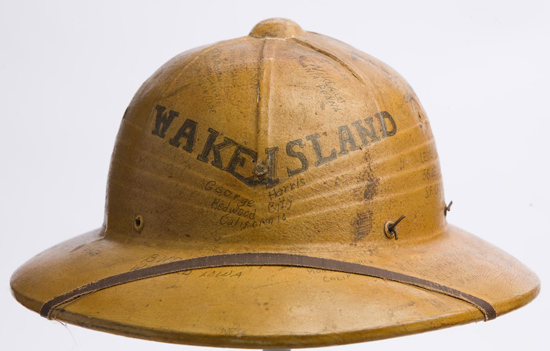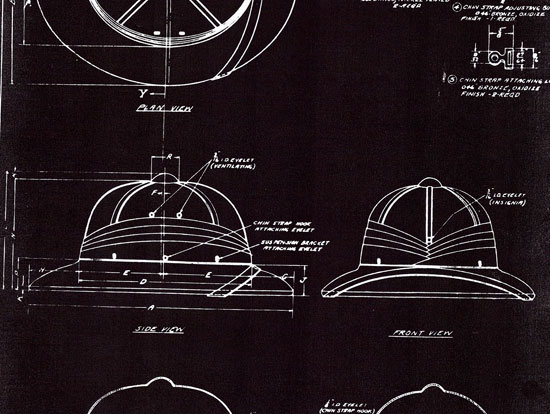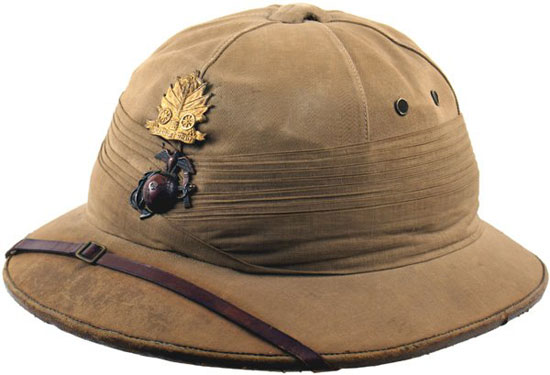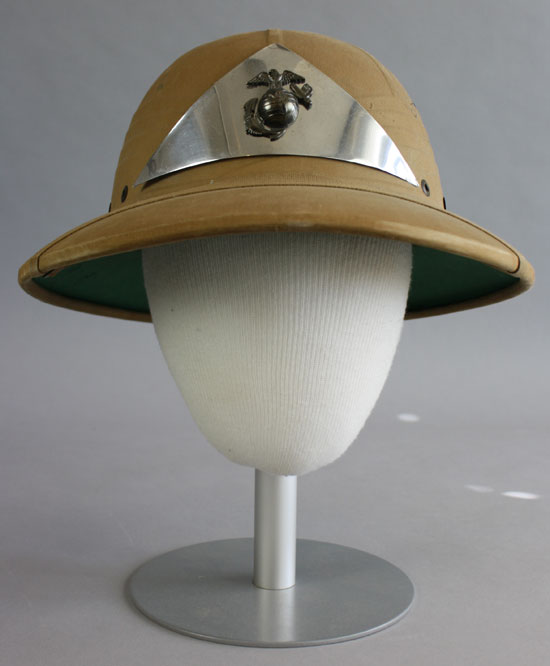 Our friends at the National Museum of the Marine Corps recently shared some photos of the above helmet. It is truly something we’ve never seen before. It was suggested that the unique triangular metal plate may have been worn to identify the owner as an “instructor” but more information isn’t available. Continue reading
Our friends at the National Museum of the Marine Corps recently shared some photos of the above helmet. It is truly something we’ve never seen before. It was suggested that the unique triangular metal plate may have been worn to identify the owner as an “instructor” but more information isn’t available. Continue reading
Category Archives: United States
The Hawley Pressed Fiber Sun Helmet – Patented
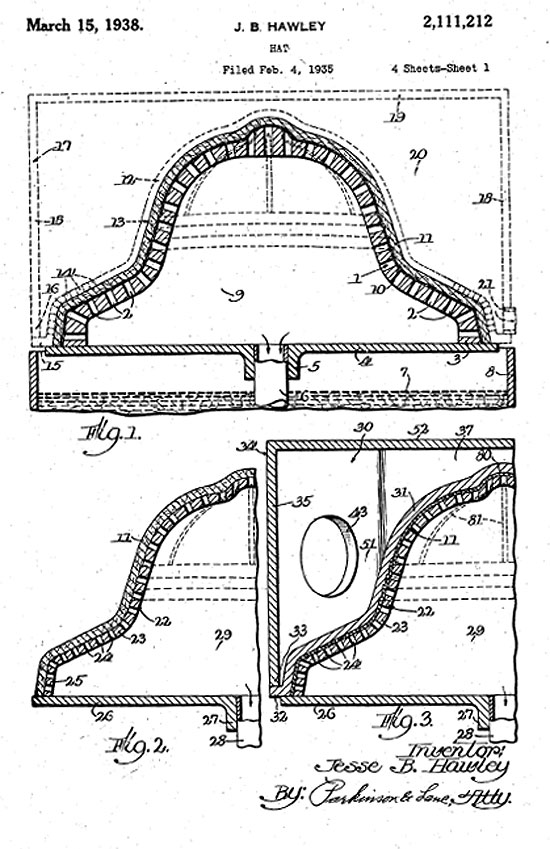
It has been long established that there were two makers of the American pressed fiber sun helmet –Hawley Products and the International Hat Company. As we’ve previously noted, the USMC blueprints for the helmets dated back to the 1940s, however we’ve been provided with the original patents from 1935 and 1936. These were filed with the U.S. Patent Office by Jesse B. Hawley, the founder of Hawley Products and apparently the original inventor and patent holder of the Hawley sun helmet. Continue reading
The 19th Century USMC Sun Helmet
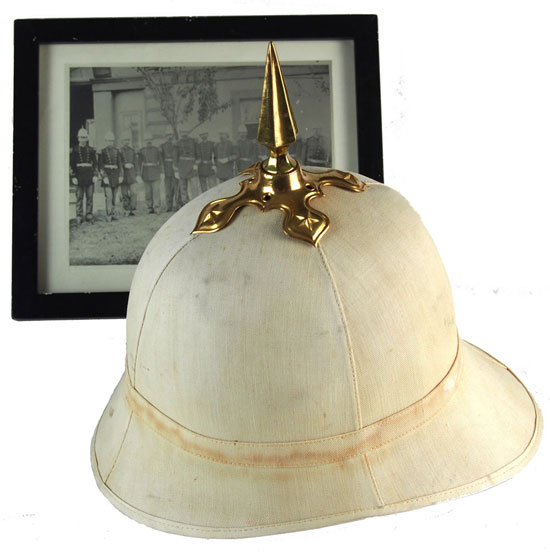
It is well established – as we’ve noted in past articles – that the United States Marine Corp has long utilized sun helmets. The pressed fiber examples were likely based on the British “Standard Pattern” and continue to be used even today.
What is less understood is when and more importantly where the Corps used the Model 1887/89 pattern sun helmets. It has been argued by collectors that the USMC may have adopted its own helmets – which were similar to the Model 1881 helmets that were utilized by some National Guard and State Militia units. It is true that the USMC Band helmets are close to those designs. Continue reading
Havelock Neck Curtains in Modern Combat
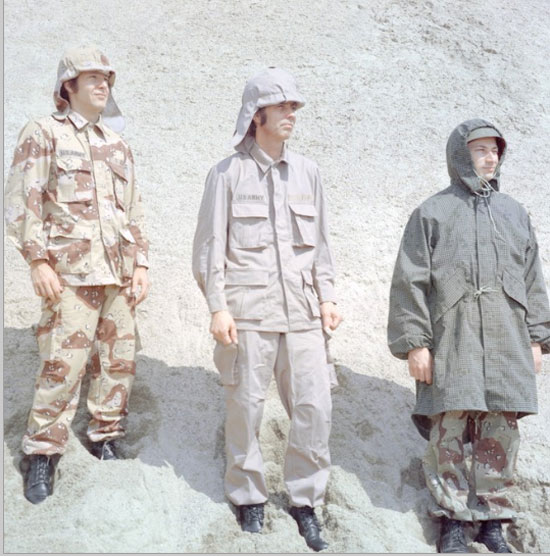
Photo: Digital Commonwealth of the Massachusetts Collections Online
Since its introduction in the middle of the 19th century various military forces have used neck curtains as a way to shield the harsh rays of the sun from a soldiers neck. First introduced in India circa 1842, the neck curtain – commonly dubbed a “Havelock” – was not limited to use in India, or even by the British military. The French Foreign Legion may be one of the best examples of a military to use the neck curtain – in part thanks to movies and books, which showed the Legion in North Africa with a kepi and havelock. However it seems that even in the recent past military planners have considered how these simple neck curtains could be incorporated with modern combat helmets. In the 1970s the American military tested some helmet covers that could be left unfolded in the back as a way of creating an ad hoc Havelock neck curtain.
Art of the Helmet Revisited
Back in late 2012 we offered a quick look at how the American pressed fiber helmets were used as a canvas for some very talented artists. One of the helmets that we included was one from Wake Island, which featured a number of signatures. Now some new, and fascinating, information has come to light on the helmet from a reader. Continue reading
The American Pressed Fiber Helmets Blueprints
The history of the American pressed fiber sun helmet continues to be one that remains shrouded in mystery. However, thanks to my friend and colleague Alex Tulkoff some information has come to light. Mr. Tulkoff recently uncovered original blueprints for the helmet and more importantly a May 1941 dated Quartermaster order, which offers some insight information about the costs of the helmets.
The British and Haitian Connection to the Pressed Fiber Sun Helmet
The American pressed fiber helmet was used since the 1930s and continues to see use on the shooting range in the USMC to this day. However, its exact origins have been largely forgotten. However, further study and research to the subject reveals that its origins could go back to the late 1920s when the United States was involved in protecting American interests in Haiti.
Apparently too this most American of helmet patterns could actually be based on one of the most British of patterns as well. How this helmet came to be could begin back in 1915 when the USMC began its 20 year reorganization and training of the military of Haiti. Continue reading

